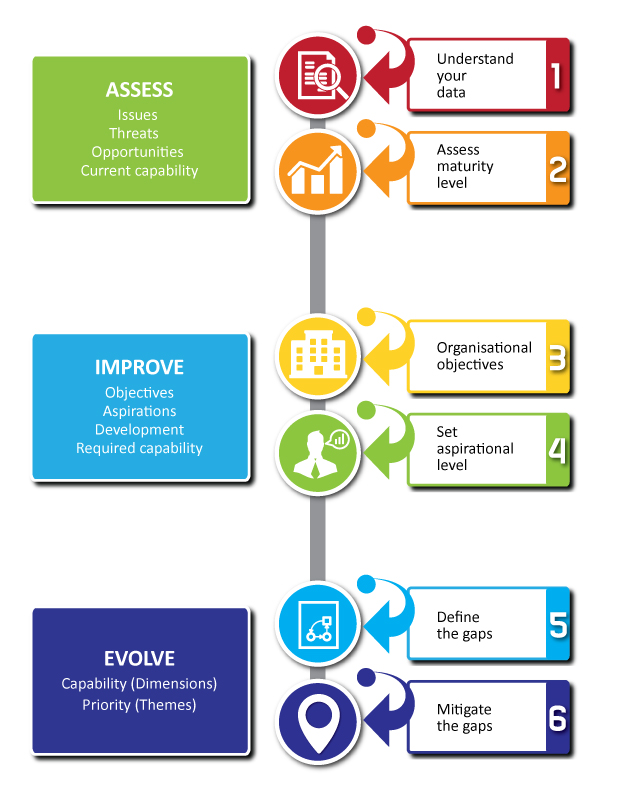Data Capability: Small toolkit
Data Capability forms a cornerstone of the aspiration to improve the HE data and information landscape

The small toolkit steps through this three stage process to create a plan for smaller institutions or tactical solutions for larger institutions.
Data improvement process
Assess: Issues, threats, opportunities, current capabilities
Improve: Objectives, aspirations, development, required capability
Evolve: Capability (dimensions) and priority (themes)
The toolkit
The toolkit has four components:
- Data improvement process: linked to above, a logical flow of steps to assess your current maturity and create a data improvement plan customised for your organisation.
- Signposting: providing detailed information and guidance to explain data management concepts and how they fit into the plan.
- Templates and examples: linked from and included in the process pages, providing worked examples of how to create the collateral for the improvement plan.
- Query tools: included in the process pages to help you explore benefits, risks, characteristics and gaps.
Terminology
The toolkit assumes a basic understanding of data, information and knowledge:
- Data is a representation of facts; it can be formed of numbers, text, graphics, pictures, sound and video.
- Information is data in context – the difference between a string of random numbers and the context that these represent a telephone number.
- Knowledge is harder to pin down; one definition is ‘information with perspective’. By applying insights, trends, patterns and even assumptions to information, knowledge may be created. Knowledge used to be very much a human interpretation of data but with the massive shift to large, low cost compute power, predictive analytic engines and the explosion of available data, knowledge is very much both human and system generated perspectives and insights.
